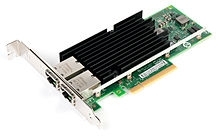- Related articles
- GBIC Module, Main Function & Key Features
- EoS and EoL News for the Cisco 10GBASE DWDM XENPAK Modules
- All Cisco DWDM-XENPAK-51.72's information (List price, Specs, Datasheet PDF, Compatibility
- Optical Transceivers for Cisco IE-3000-8TC-E Switch
- All Cisco CWDM-GBIC-1510's information (List price, Specs, Datasheet PDF, Compatibility ma
- All Cisco CWDM-GBIC-1570's information (List price, Specs, Datasheet PDF, Compatibility ma
- Optical Transceivers for Cisco N3K-C3548P-10G Switch
- The Things You Need to Know about 10GBASE-R Ethernet Standards
- All Cisco XFP10GLR-192SR-L's information (List price, Specs, Datasheet PDF, Compatibility
- All Cisco XENPAK-10GB-LR's information (List price, Specs, Datasheet PDF, Compatibility ma

Definition
In computer networking, Gigabit Ethernet (Gibe or 1 GigE) is a term describing various technologies for transmitting Ethernet frames at a rate of a gigabit per second (1,000,000,000 bits per second), as defined by the IEEE 802.3-2008 standard. Both of these terms refer to a networking standard called "Ethernet" which is the most common way of connecting computers together.
Differences
The terms 10Base-T (Ethernet) and 100Base-T (Fast Ethernet) refer to the performance capability of the Network Interface Card (NIC) 10Base-T has a rated transfer speed of 10 Megabits per second and 100Base-T is rated at 100 Megabits per second .
In most disk-intensive applications such as Accounting, Database, Point-of-Sale or Contact Management, upgrading to 100Base-T can have a dramatic impact on networks that work mainly in Word Processing, Spread sheet or other "Single Data File" environments, upgrading would probably not result in much of a performance gain, since the overhead for these situations is already pretty low.
Application
100 BASE-T can link distances greater than 300 m; the use of a special launch conditioning patch cord may be required.100 BASE-T standards are highly popular for intra-building links in large office buildings, co-location facilities, and carrier-neutral Internet exchanges. This reduces the effect known as differential mode delay which occurs when the laser couples onto only a small number of available modes in multi-mode fiber.
100BASE FX
100BASE-FX was developed in the mid-1990s; it is still in use today, 10 years later, when we also have Gigabit and 10-Gigabit available. One reason is that 100-FX has the longest range over a multimode fiber-optic cable of any Ethernet technology. While 100-FX can reach two kilometres using any quality of multimode fiber, the Gigabit maximum range is 550 meters, and the 10-Gigabit maximum range is 300 meters on only the highest-quality multimode fiber.
1000BASE TX
The device is simpler to implement and is called it 1000BASE-TX .The simplified design would have, in theory, reduced the cost of the required electronics by only using two unidirectional pairs in each direction instead of four bidirectional pairs. These have a wide range of applications in the high-speed data transfer applications. However, this solution has been a commercial failure due to the mandatory Category 6 cabling that is involved in the manufacturing and usage of the product and the rapidly falling cost of 1000 BASE-T products.
Conclusion
Gigabit Ethernet standards are defined in the 802.3z standards of Project 802 developed by the IEEE. 1000BaseT technologies are in the beginning stages of being widely implemented in enterprise-level networks and are primarily used for long cable runs between pieces of equipment on a campus or within a building. When you use multimode fiber-optic cabling in 1000BaseT implementations, a condition called differential mode delay (DMD) can sometimes occur.







































































